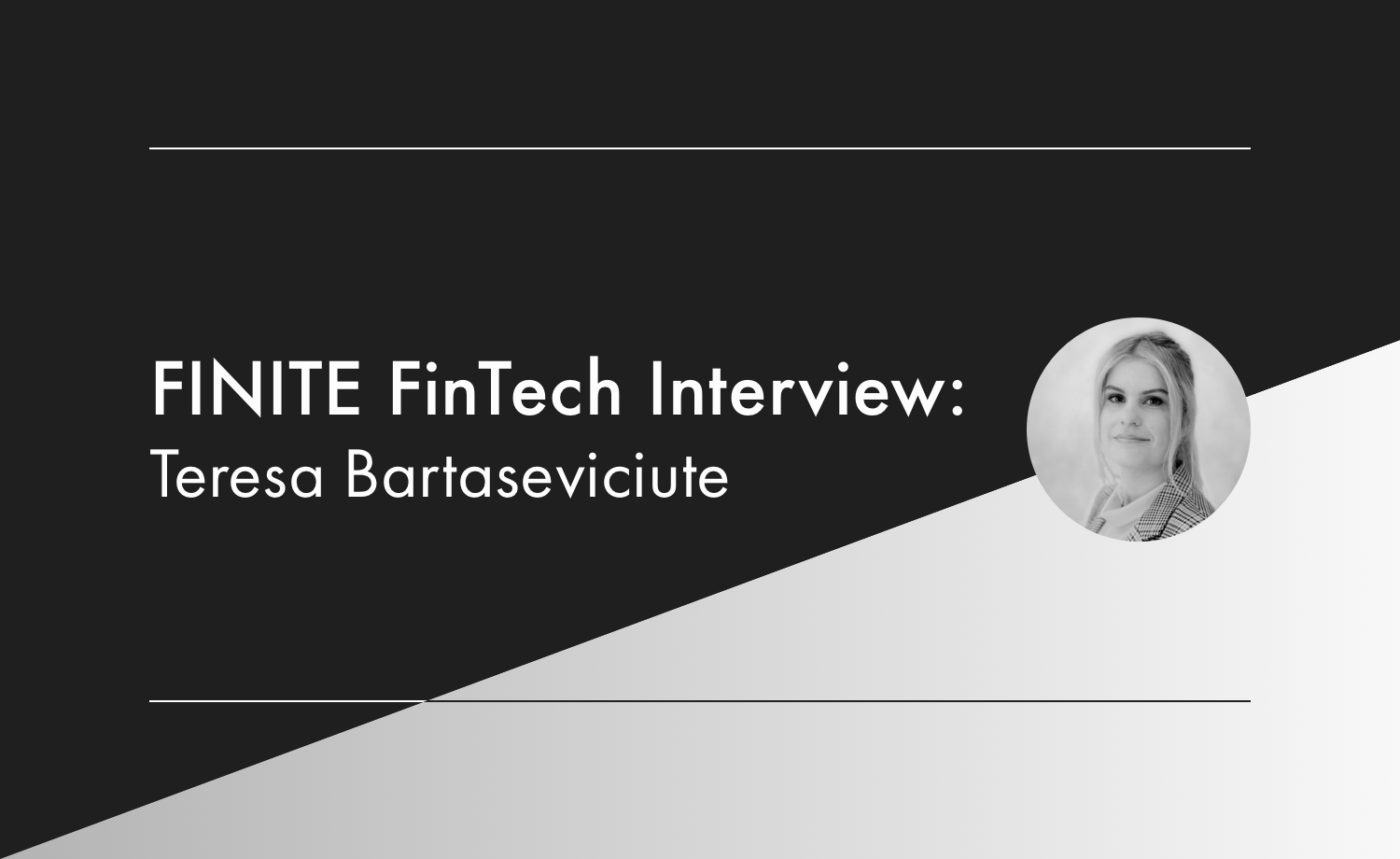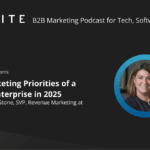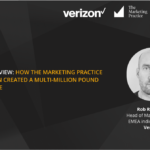Measuring return on marketing investment (ROMI) is a key skill of any modern marketer. It is in the marketing department’s favour to prove just how much impact their efforts are having on wider business goals and revenue.
In this edition of the FINITE FinTech Interview Series, we spoke with Teresa Bartaseviciute, Marketing Manager at Automated Payment Transfer Ltd, a London based finance technology company specialising in bank-to-bank (Bacs) payments.
The interview covers:
- The three main return on investment metrics you can use in your own marketing
- How Covid affects ROMI
- How to measure customer satisfaction
- Extra tips for measuring return on marketing investment
FINITE: Hi Teresa, thanks for getting involved in the FINITE community. Firstly, could you tell us about your background in B2B FinTech marketing?
Teresa: Hi, sure. I’ve been in B2B, B2C, and agency side in marketing in the UK in FMCG, events and technology industries for over six years, latest being payments FinTech APT (Automated Payment Transfer). I have led marketing teams to deliver creative, branding, and promotional initiatives, while ensuring organisational growth and expansion.
APT’s main mission is to provide uncompromising cash flow efficiency for its business clients. These businesses consider their Bacs payment operation to be critically important to the business and therefore need a very secure and reliable tool to collect money or pay suppliers thousands of transactions at once.
At the moment at APT we are working hard on building the next generation of payments software, meaning we need a healthy bottomline to fund the development process. It implies that there is a need to have a substantial return on every penny spent on marketing, so that we’re always in the plus.
FINITE: What is ROMI, and why does it interest you?
Teresa: Return On Marketing Investment is a necessary component in measuring investment derived from marketing expenditure.
ROMI, and what should be included in it, has been a subject of debate between many marketing professionals. ROMI, being one of the most important metrics in marketing, results in plenty of research on the subject:
- Market Share—a Key to Profitability
- Advanced Customer Analytics: Strategic Value Through Integration of Relationship-Oriented Big Data
- Development of the Subsystem of Forecasting for the System of Marketing Information Management at an Industrial Enterprise
There is no single unified answer in academia, or the business world, on how best to measure return on marketing investment. Your chosen formula (and more importantly its elements!) will highly depend on each business and their needs separately.
FINITE: Why do you think ROMI is key to a great B2B FinTech marketing strategy?
Teresa: I believe it is a fundamental business question, which we can answer by first introducing the marketing concept:
“The marketing concept implies that all the activities of an organisation are driven by a desire to satisfy customer needs.”
When we look at a successful business, we have these elements:
- The best possible service as a product, which needs to be based on your
customer’s needs, hence the R&D, constant market analysis and communication with target B2B personas. - Agile, fast and cost efficient business operations fitting into how your customer functions in their environment, so it matches their needs in the best possible way.
- Mission led company culture and internal marketing campaigns to have the best performing team. Also, your own employees should be the biggest, most excited brand advocates!
So when you understand that marketing touches every part of the business, and its the core of everything, ROMI becomes about core metrics showcasing the health of the business. If ROMI is positive and brings return on investment, it means the business is doing a good job in serving its customers and is profitable. Keeping these elements in a good state does take a lot of investment!
FINITE: Could you share with us how you’re currently measuring return on marketing investment at APT?
Teresa: Sure, ROMI metrics used at APT LTD are tightly connected to sales and financial metrics due to the company being sales driven. We do concentrate a lot on sales metrics because our target market requires a lot of hand holding due to tight regulations in the banking industry. Our customers have a long and technical sales process, making relationship management the core of the business.
Three main ROMI metrics used at APT LTD:
Return on Marketing Assets
This calculation involves taking net profit and dividing it by total marketing expenditure, staff included. Tracking return on marketing assets shows how marketing department value increases or decreases during certain periods, such as campaigns or on an annual basis.
Leads to sale ratio
The marketing department’s goal is to provide marketing qualified leads. Leads to sale ratio is helpful in seeing if the marketing function is acquiring quality leads and if the number starts to go up, it means that there is necessity for a different strategy. Higher numbers of leads needed for sale potentially equals higher cost per sale, making it an important metric for both marketing and financial departments.
ROAS (Return on Ad Spend)
This marketing metric measures the success of any given campaign by the amount of revenue APT LTD earns for each pound sterling it spends on advertising, by taking average sale value (1-year subscription) and dividing by how much it cost to acquire one customer. This calculation allows us to assess the best performing campaigns and channels.
FINITE: How has Covid-19 impacted your tracked metrics?
Teresa: Covid impacted our tracked metrics temporarily, where the marketing department’s focus shifted from bringing new sales to keeping existing customers.
We decided to provide a free contingency service to any business client that could be adversely impacted by the virus. This meant that in extreme
circumstances when they were not able to submit their payment files to Bacs, APT will be able to submit them on their behalf.
Besides investing more in customer service and supporting APT’s customers in such difficult times, ‘iConnect’ software churn rate and customer retention cost is tracked every month to guarantee APT LTD’s own business continuity.
FINITE: What’s the best way to measure ROMI?
Teresa: We need to stop looking at marketing as a solely promotional activity. It is impossible to track its effect on product sales (return on investment) without taking into account other business variables, such as competitors, price, sales force, logistics, etc.
Therefore, the marketing department needs to influence other business functions to help achieve marketing-orientated goals outlined in the corporate strategy. These goals should be covered by relevant metrics in the metrics suite.
To better measure ROMI it is necessary to divide data by market segment, which helps you understand how your product is performing according to specific segment needs and attitudes and benchmark it against competitors. In addition, market share within each segment is one of the most important ROMI measures as it showcases if chosen actions do make a positive difference.
I like the idea of impact factors introduced in Marketing Value Metrics. The authors suggest deciding on the main impact factors for each segment together with “linkages” between the cause and the effect, helping the company to assess how impact factors affect ROMI for the chosen product.
For example, if churn rate is measured, is the metric suite showing how customer satisfaction affects churn rate and how reducing churn rate increases customer lifetime value?
FINITE: What other most important metrics should a B2B FinTech marketer track?
Teresa: Customer satisfaction is one of the most important business elements in order to survive and increase market share from repeat purchases. It is important to track customer loyalty, because loyalty means reduced operational costs, increased sales, and reduced marketing costs.
I use two main metrics to track customer satisfaction:
- An after support survey to find out if existing customers are happy with software support service.
- Net Promoter Score (NPS) to track overall satisfaction with our software’s payments function.
It is assumed that higher rates in after support and NPS metrics will lead to high rates in customer retention (loyalty) and reduced churn rate. This increases customer lifetime value, which is the main metric to evaluate customer equity.
FINITE: These are some great tips on how to track return on marketing investment! Thanks for sharing your knowledge with us Teresa.
To read the last edition of our FINITE FinTech Interview Series, and to learn about building a world-class marketing team, head here!










